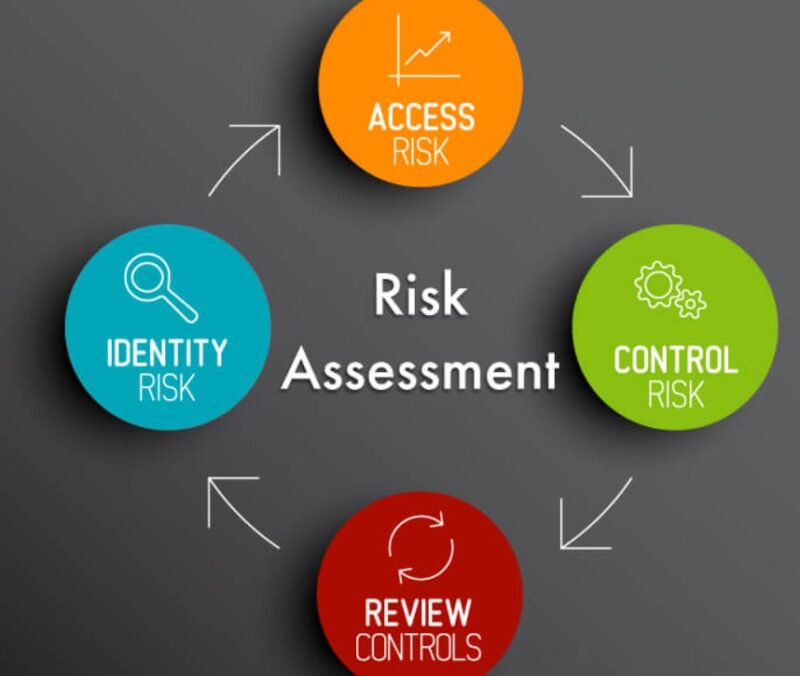In this digital age, every business faces different cybersecurity risks. What differentiates one business from another is the severity level of these risks.
A business handling financial and personal data over the internet every day is prone to security risks. Given that cybercrime is mainly about information harvesting, you can’t dismiss the need to perform cybersecurity analysis and assessment to ascertain your level of exposure.
Part of your risk mitigation is ensuring your work devices have cybersecurity protection. Depending on the device group, you can outsource this from different service providers. For example, in a remote work setup, you can use Bluefort to protect your mobile devices. With such a security service, your employees can feel safe anytime, anywhere, and using any device. Other than mobile devices, other sectors of your business need cybersecurity protection, too. To know which ones should be covered, a cybersecurity risk assessment has to be performed.
Page Contents
Importance Of Cybersecurity Assessment
As long as your business uses digital technology, you are at risk of exposure to malware, phishing, or ransomware. After a cybersecurity risk assessment, you’ll realize its importance in the following ways:
- Avoids reduction in productivity due to downtime
- Prevents data loss from network breaches
- Ensures you stay up to date with industry compliance and regulations
- Enables you to take appropriate risk mitigation measures (e.g., cybersecurity insurance)
- Prevents business failure due to loss of reputation from a cyber attack
7 Steps To Performing A Cybersecurity Risk Assessment
One of the main reasons for a cybersecurity assessment is to know what risks you face and where you stand in reducing or preventing them. The following steps can guide you to achieve this result:
1. Map Out The Scope Of The Risk Assessment

Source: oxfordcompanies.com
Before beginning the assessment exercise, determine what areas of your business you are assessing. This can be a section, a department, or the whole organization, depending on the information it handles. Alternatively, you can also determine which devices to assess. This can be customer-facing devices or back-office devices.
Further, you can also use compliance guidelines in your industry to determine what areas to assess. Whatever classification style you decide on can depend on the size of your organization, information risk value, compliance, or the device’s risk exposure level.
2. Determine And Prioritize The Information Value

Source: bootcamp.uxdesign.cc
Even though all the information you handle is sensitive, each carries different levels of importance. If you are a small or medium-sized organization with a limited budget, you may restrict your information assessment to the most critical data. Overall, you should classify your information as either critical, major, or minor.
To help you find ways to classify information, you can look at the legal implications of data if lost, cost you can accrue in case of loss, and value to an outside party. An outside party can be your competition or cyber attackers. Once you determine what value the information holds to your organization, you can take the next step.
3. Identify And Prioritize Your Assets

Source: dicecommunications.com
In this case, assets refer to the technology software you use, infrastructure devices, and all users. Following the same rule with the information value, you can identify the asset you will assess as per location, department, usage, and effect on the organization. For example, you may prioritize devices that hold client data above devices you use to generate memos and other internal communications.
Your asset classification should let you know the data involved, functions, users, software, security requirements, and critical levels by the end of this step. From this classification, you can know what higher cybersecurity measures and apply them.
4. Identify Threats Or Risks

Source: numata.co
After knowing the scope of your assessment, information value, and the assets, you can now look at the threats your business faces. Cybercriminals always devise ways to harvest information from databases. These ways form the major part of the cyber threats your organization faces. Whether it’s malware, ransomware, or phishing techniques, the threats can penetrate your network and cause substantial data loss.
Other threats common in an organization are internal threats, service disruption, and data leaks. Internal threats can be a lack of staff training on browsing etiquette and hygiene. For example, users may click on phishing emails that lead to a data breach. Alternatively, insufficient cybersecurity protocols may lead to weak passwords, firewalls, or configurations. This can create loopholes through which cybercriminals can easily collect sensitive information.
In general, there are three ways you can carry out a threat sanitization exercise:
- Find ways to avoid risks either by obtaining the services of a cybersecurity service provider or stopping the use of a particular software if it exposes your business to higher risk.
- Procure cybersecurity insurance liability to enable you to share the risk with a third-party service provider.
- Employ risk reduction strategies by having cybersecurity protocols that enable this.
5. Identify Your Vulnerabilities

Source: securityintelligence.com
During this step, you check for gaps in your network and security protocols that cybercriminals can exploit to cause data loss. You can achieve this by looking at software analysis, security audits, cybersecurity protocols, and software vendor data reports. Part of minimizing the vulnerability of your business is configuring your software for automatic forced-update.
6. Analyze And Prioritize Risks And Their Potential Impacts

Source: solvexia.com
Now that you have your scope, the value of information, assets, threats, and vulnerabilities, consider various scenarios that can occur when network breaches occur and how they can affect your business. For instance, a credit card information breach can mean a loss of confidence in your business system. Additionally, some clients may opt to take their business to your competition. As a result, you lose revenue and reputation. You may even end up paying penalties for not having a data protection mechanism.
By playing out such scenarios, you can classify the risks as high, medium, or low depending on the impact on the business and its partners. High-level risks would mean you urgently need to implement cybersecurity measures to avoid or prevent security breaches.
7. Provide Documentation And Recommendations

Source: unsplash.com
Once you’ve performed all the above steps, you should document each step and, where possible, outline possible measures for each. This will be handy when you need to initiate cybersecurity protocols and provide a roadmap for your network security controls. This step should also elaborate on any monitoring measures to undertake to mitigate your business’s cybersecurity risks.
Conclusion
It’s important to note that, with technology, you can never be too secure. This is due to the ever-changing cybersecurity threats that can easily expose your business to cybercrime. Therefore, the steps listed here can help you perform a cybersecurity risk assessment to stay abreast with current cyber threats and protect your business and employees as necessary.





